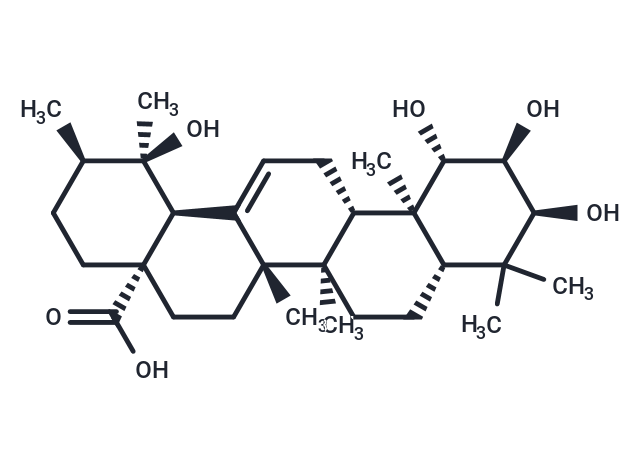Shopping Cart
- Remove All
 Your shopping cart is currently empty
Your shopping cart is currently empty

1beta-Hydroxyeuscaphic acid demonstrates notable hepatoprotective activity, effectively minimizing the leakage of intracellular enzymes, attenuating protein oxidation, and reducing apoptosis rates.

| Pack Size | Price | Availability | Quantity |
|---|---|---|---|
| 5 mg | $670 | Backorder |
| Description | 1beta-Hydroxyeuscaphic acid demonstrates notable hepatoprotective activity, effectively minimizing the leakage of intracellular enzymes, attenuating protein oxidation, and reducing apoptosis rates. |
| Alias | 1beta-Hydroxyeuscaphic acid |
| Molecular Weight | 504.7 |
| Formula | C30H48O6 |
| Cas No. | 120211-98-5 |
| Relative Density. | 1.23 g/cm3 (Predicted) |
| Storage | Powder: -20°C for 3 years | In solvent: -80°C for 1 year | Shipping with blue ice. |

Copyright © 2015-2025 TargetMol Chemicals Inc. All Rights Reserved.